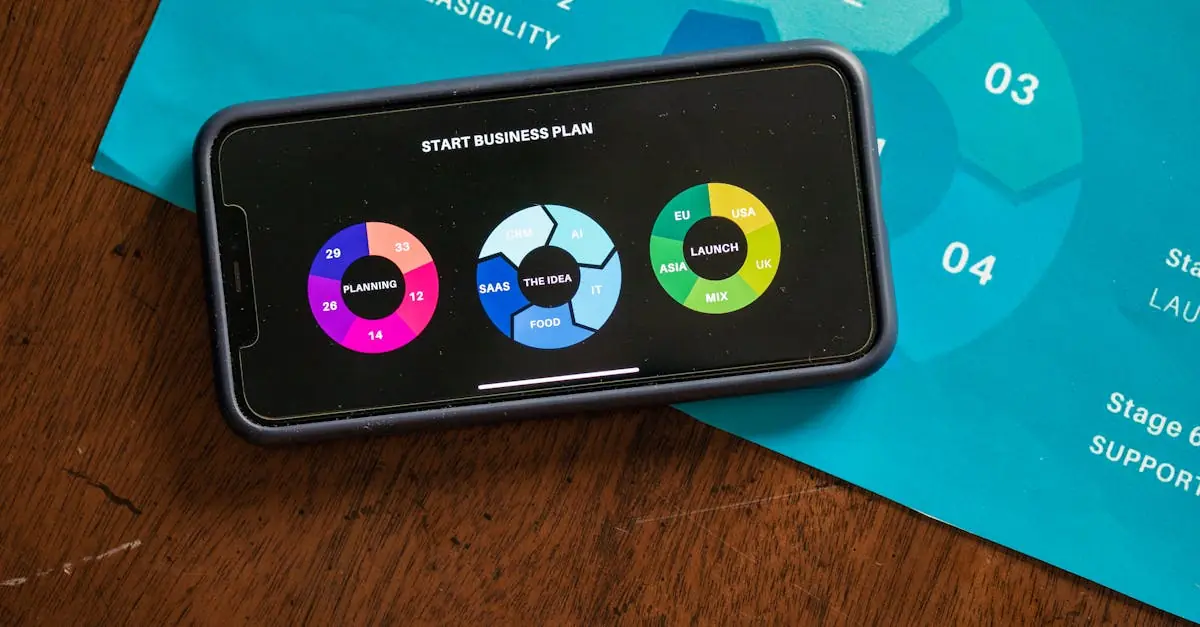Table of Contents
ToggleIn the ever-evolving world of software, SaaS multi-tenancy stands out like a unicorn at a horse race. It’s not just a fancy buzzword; it’s the secret sauce that allows multiple customers to share a single software instance while keeping their data as secure as a squirrel with its acorns. Imagine a bustling apartment building where each tenant enjoys their own cozy space, yet they all benefit from the same building amenities. That’s the beauty of multi-tenancy.
Overview of SaaS Multi-Tenancy
SaaS multi-tenancy refers to a software architecture that allows multiple customers, or tenants, to share a single software instance. Each tenant’s data is stored separately, ensuring security and privacy. This model streamlines resource utilization and enhances scalability.
By using a shared infrastructure, businesses can reduce costs associated with hardware and maintenance. Software updates benefit all tenants simultaneously, eliminating the hassle of individual upgrades. Additionally, developers can focus on one version of the software, simplifying maintenance processes.
The multi-tenancy approach facilitates rapid deployment capabilities. New clients can onboard quickly, minimizing setup time and operational delays. Furthermore, service providers can efficiently manage operations, leading to improved customer service.
Performance adaptability demonstrates another vital aspect. Systems can adjust resources based on demand fluctuations, ensuring consistent availability and performance. This responsiveness helps service providers meet varying customer needs.
SaaS multi-tenancy promotes collaboration amongst tenants. Various customers can share common features while customizing aspects of their experience. Such flexibility enhances user satisfaction, enabling companies to tailor services according to specific requirements.
Robust security measures play a crucial role in instilling tenant confidence. Data isolation mechanisms prevent unauthorized access, safeguarding each customer’s information. Service-level agreements often outline security protocols, assuring tenants of reliable protections.
Ultimately, SaaS multi-tenancy represents an effective model in the software-as-a-service landscape. The collective efficiency, cost savings, and enhanced security contribute to its growing popularity in various industries. The competitive edge gained from adopting this architecture becomes clear as companies seek streamlined solutions for their software needs.
Key Benefits of SaaS Multi-Tenancy
SaaS multi-tenancy offers numerous advantages that significantly enhance operational efficiency. It primarily focuses on providing cost savings, optimizing resources, and ensuring robust performance.
Cost Efficiency
Cost efficiency ranks among the most compelling benefits of SaaS multi-tenancy. Sharing a single software instance across multiple customers leads to substantial savings on infrastructure, maintenance, and support. Organizations cut expenses related to server investment, licensing fees, and development costs. With universal updates, companies avoid individual upgrade expenses, resulting in lower operational budgets. By minimizing these costs, businesses can allocate resources toward innovation and customer satisfaction, improving competitive positioning in their markets.
Resource Optimization
Resource optimization plays a vital role in enhancing the SaaS multi-tenancy model. Consolidating resources maximizes utilization, allowing service providers to manage workloads effectively. This approach reduces redundancy, streamlines performance, and increases throughput. Furthermore, it enables swift scaling, adapting seamlessly to demand fluctuations without deploying extra hardware. Multi-tenancy fosters an environment where resources are efficiently distributed, ensuring that all tenants access high-quality service regardless of their individual usage peaks. This strategy significantly enhances overall system performance while minimizing resource waste.
Types of Multi-Tenancy Models
SaaS multi-tenancy encompasses various models tailored to meet distinct business needs. Understanding these models aids in selecting the right approach for optimizing resources and ensuring customer satisfaction.
Single-Tenant vs Multi-Tenant
Single-tenant architecture hosts separate instances for each customer. This model provides robust data isolation and customization but increases operational costs due to resource duplication. Multi-tenant architecture, in contrast, shares a single application instance among multiple customers. This option promotes efficiency by reducing maintenance and overhead costs. The choice between these models balances cost-effectiveness with security requirements, highlighting individual business priorities.
Hybrid Models
Hybrid models incorporate elements from both single-tenant and multi-tenant architectures. Organizations can utilize the benefits of shared resources while maintaining tailored instances for specific tenants. By applying a hybrid approach, businesses achieve flexibility and scalability. This model allows for customization without sacrificing cost efficiency. Different tenant requirements can be met while minimizing resource waste, effectively addressing diverse operational needs.
Challenges of SaaS Multi-Tenancy
SaaS multi-tenancy presents certain challenges that organizations must address to ensure effective implementation.
Security Concerns
Security concerns play a critical role in SaaS multi-tenancy. Multiple tenants using the same infrastructure heightens the risk of data breaches. Adequate measures, such as encryption and authentication protocols, are essential. Furthermore, organizations must implement robust monitoring to detect unauthorized access. Developing clear protocols for handling security incidents strengthens overall security posture. Regular audits ensure compliance with standards, enhancing trust among tenants. Ultimately, safeguarding sensitive information remains a top priority.
Data Isolation
Data isolation is another important challenge in multi-tenancy. Each tenant requires robust safeguards to ensure their data remains private. Data breach incidents can arise when proper isolation isn’t maintained. Implementing strict access controls mitigates risks effectively. Organizations must design their architecture to ensure that one tenant cannot access another tenant’s data. Regular testing for vulnerabilities assists in identifying potential weaknesses in data isolation strategies. Maintaining confidence in data protection is essential for retaining customers in a competitive market.
Best Practices for Implementing SaaS Multi-Tenancy
Implementing SaaS multi-tenancy requires careful planning and execution. Organizations must focus on several best practices to ensure success.
Scalability Considerations
Scalability is critical for SaaS multi-tenancy. It’s essential to design architecture that allows for seamless growth as user demands increase. Implementing elastic scaling features enables automatic resource adjustment based on workload fluctuations. Monitoring usage patterns provides insights for optimal resource allocation. Establishing a tiered service model accommodates different tenant requirements while maintaining performance. Consider using containerization technologies to enhance deployment flexibility and resource sharing.
Performance Optimization
Performance optimization plays an important role in a successful SaaS multi-tenant environment. Administrators should regularly analyze system performance metrics to identify bottlenecks. Implementing caching mechanisms can significantly reduce response times for frequently accessed data. Load balancing helps distribute traffic evenly across servers, enhancing user experience. Choosing efficient database structures enables faster data retrieval and processing. Regularly updating software and infrastructure ensures tenants enjoy the latest features and performance improvements.
Conclusion
SaaS multi-tenancy stands out as a transformative approach in the software industry. By allowing multiple clients to share a single software instance, it drives efficiency and cost-effectiveness while maintaining data security. Organizations can leverage the benefits of resource optimization and scalability, enabling them to respond swiftly to market demands.
Navigating the challenges of security and data isolation is crucial for successful implementation. By employing best practices and robust security measures, businesses can foster tenant trust and satisfaction. As the SaaS landscape continues to evolve, embracing multi-tenancy will be vital for organizations aiming to enhance their service offerings and maintain a competitive edge.



